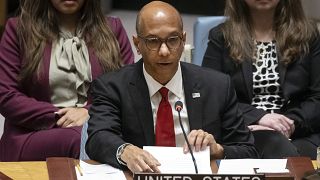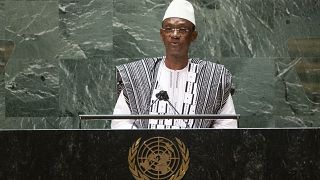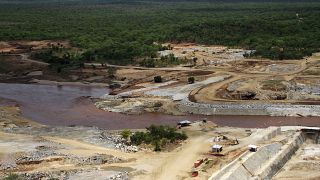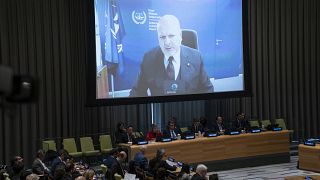Ethiopia
The United Nations is urging for more investment in long-term projects to protect people in developing countries from droughts, following a visit by heads of UN agencies to Ethiopia, where 9.5 million people are in need of food assistance.
Ethiopia’s Somali Region, where rains have failed for the third consecutive year, is experiencing emergency levels of hunger – one level below famine in a five-point scale used by food agencies. About 2 million animals have died here since the end of last year, crippling herding communities, according to the U.N. Food and Agriculture Organization (FAO).
While touring the region last week, the heads of the United Nations food agencies said more investment is needed in long-term projects to protect people in developing countries from drought.
The heads of the UN food agencies said investment in irrigation, water points, rural financial institutions, health and veterinary services helps communities to protect themselves and their livestock through even a devastating drought.
“One thing is for sure, we’ve got to scale up. One thing is for sure, we cannot continue going by a project approach. We have not only the three agencies, but what we call the whole development community has to really look at the ways of having much more synergy between the different actions. We saw colleagues from different NGO’s as well but globally we need to scale up,” said Gilbert F. Houngbo, President of the International Fund for Agricultural Development (IFAD).
Eastern and southern Africa were hit hard last year by drought exacerbated by El Niño – a warming of sea-surface temperatures in the Pacific Ocean – that wilted crops, slowed economic growth and drove food prices higher.
The World Food Program is helping to ease the pressure on victims of the drought in the horn of Africa.
“Water is the issue here. You have the drought here, which means the cattle the livestock suffer, which means the people suffer, which means there’s hunger that is the issue here. The World Food Programme is feeding 3.3 Million people on average per day in the Somali Region and it’s because of a drought as a result of the change of the climate”, Executive Director at the WFP, David Beasley said.
A strong aid response almost halved the number of Ethiopians needing food aid to 5.6 million by January.
But the drought was followed by poor spring rains in the south and east of the country.
25 year old Fatuma Muktar Sheikh Abdulnasir has been badly affected by the drought. She said she has lost pretty much everything.
“I have six children. My husband is a pastoralist. We lost our livestock to a prolonged drought in the area. I had 53 cattle. I have lost 43 and now I am only left with 10. Everyone around here has experienced the same level of suffering caused by the drought,” said Fatuma Muktar Sheikh Abdulnasir.
According to the U.N, close to 17 million people across the Horn of Africa need humanitarian aid due to drought, including 2.6 million in Kenya and 3.2 million in Somalia.











00:58
Somaliland opposition leader wins presidential poll
02:09
Russia vetoes UN resolution calling for immediate cease-fire in Sudan
01:07
Sudan keeps key aid crossing from Chad open to keep humanitarian aid flowing
01:26
Zimbabwe’s Climate-Smart Agriculture: Empowering Farmers through Resilience and Innovation
01:58
Climate adaption: Unfulfilled pledges mean “lost lives and denied development” – UN chief
11:07
Botswana's new government races to diversify its economy {Business Africa}